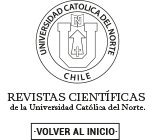Lo que todo profesional de la salud debe saber sobre las convulsiones psicógenas no-epilépticas (CPNE)
DOI:
https://doi.org/10.22199/S07187475.2014.0002.00005Palabras clave:
Eventos no-epilépticos, disociación somatoforme, inducción de convulsiones, experiencias de abuso infantil, epilepsia, Non epileptic events, somatoform dissociation, seizure induction, childhood abusive experiences, epilepsy,Resumen
Las convulsiones psicógenas no-epilépticas (CPNE) son parecidas a las convulsiones de tipo epiléptico, lo que suele traer mucha confusión al momento de ofrecer un diagnóstico diferencial. La diferencia medular radica en que las CPNE no son producidas por anomalías electrocorticales, y sí por factores psico-emocionales. En el presente artículo, presentamos una revisión actualizada del tema, con énfasis en aspectos fenomenológicos, de diagnóstico y de curso clínico. Para ilustrar la complejidad de las CPNE, presentamos varias viñetas clínicas que se basan en la experiencia del primer autor con más de 100 pacientes con CPNE. De nuestra revisión se desprende que las CPNE se relacionan a un menoscabo y a un deterioro marcado generalizado psicosocial. Esta situación se agrava cuando típicamente pasan años antes de ofrecerse el diagnóstico correcto. Asimismo, estudios retrospectivos y prospectivos documentan el punto de que típicamente más del 50% de estos pacientes presentan un historial previo de abuso físico, emocional y sexual. Al respecto, se presenta un modelo multicausal/multifactorial para dar cuenta de las variables que predisponen, precipitan y perpetúan la aparición de las CPNE.
Psychogenic nonepileptic seizures (PNES) are likely to be confused with epileptic seizures. The main difference is that PNES are not produced by anomalous electrical brain discharges, but by emotional and psychological dysfunctions. In the present article, we present an empirical and conceptual update on PNES, emphasizing the phenomenological, diagnostic and natural course of the disorder. To illustrate the clinical complexity of PNES, we present several clinical vignettes. We conclude that PNES are elated to psychosocial burden and to impairment in several important areas of living. This situation is aggravated when the esearch literature indicate that many PNES patients are misdiagnosed with epilepsy and do not receive adequate psychological/psychiatric care. Furthermore, patients with PNES typically report high rates of a wide plethora of abusive hildhood experiences. Lastly, we present a biopsychosocial conceptual framework to understand the emergence of this disorder.
Citas
Alper, K., Devinsky, O., Perrine, K., Vázquez, B., & Luciano, D. (1993). Nonepileptic seizures and childhood sexual and physical abuse. Neurology, 43, 1950-1953.
Barry, J. J., & Reuber, M. (2010). The use of hypnosis and linguistic analysis to discriminate between patients with psychogenic nonepileptic seizures and patients with epilepsy. En S. Schachter & W. LaFrance (Eds.), Gates and Rowan’s non-epileptic seizures. (3ra ed.) (pp. 82-90). Boston, MA: Cambridge University.
Benbadis, S. R., & LaFrance, W. C. 2010). En S. Schachter & W. LaFrance (Eds.), Gates and Rowan’s non-epileptic seizures. (3ra ed.) (pp. 38-50). Boston, MA: Cambridge University.
Blum, A. S., & LaFrance, W.C. (2007). Overview of psychological nonepileptic seizures. En A. B. Ettinger & A. M. Kanner (Eds.), Psychiatric issues in epilepsy (pp. 420-431). New York: Lippincott, Williams & Wilkins.
Bodde, N.M.G., Lazeron, R. H. C., Wirken, J. M. A., van der Krujs, S. J., Aldenkamp, A. P., & Boon, P. A. (2013). Patients with psychogenic non-epileptic seizures to a tertiary epilepsy centre: Patient characteristics in relation to diagnostic delay. Clinical Neurology and Neurosurgery, 114, 217-222.
Bowman, E. (2006). Why conversion seizures should be classified as a dissociative disorder. Psychiatric Clinics of North America, 29, 185-211.
Bowman, E. (2010). Posttraumatic stress disorder, abuse, and trauma: Relationships to psychogenic nonepileptic seizures. En S. Schachter & W. LaFrance (Eds.), Gates and Rowan’s nonepileptic seizures. (3ra ed.) (pp. 213-224). Boston, MA: Cambridge University.
Bowman, E., & Kanner, A. M. (2007). Psychopathology and outcome in psychogenic nonepileptic seizures. En A. B. Ettinger & A. M. Kanner (Eds.), Psychiatric issues in epilepsy (pp. 405-419). Lippincott Williams & Wilkins.
Bozkurt-Zincir, S., Yenel, A., & Baçar-Semiz, U. (2012). Approach to patients with psychogenic non-epileptic seizures: A review. Journal of Psychiatry and Neurological Sciences, 25, 170-178.
Breslau, (2012). Epidemiology of posttraumatic stress disorder in adults. En J. G. Beck & D. M. Sloan (Eds.), The Oxford handbook of traumatic stress disorders (84-97). New York: Oxford University Press.
Brown, R. J., Syed, T. U., Benbadis, S., LaFrance, W. C., & Reuber, M. (2011). Psychogenic nonepileptic seizures. Epilepsy & Behavior, 22, 85-93.
Chen, D., Izadyar, S., Collins, R., Benge, J., Lemaire, A., & Hrachovy, R. (2011). Induction of psychogenic nonepileptic events: success rate influenced by prior induction exposure, ictal semiology, and psychological profiles. Epilepsia, 52(6), 1063-1070. doi:10.1111/j.15281167.2011.02985.x
Durrant, J., Rickards, H., y Cavanna, A. (2011). Prognosis and outcome predictors in psychogenic nonepileptic seizures. Epilepsy Research and Treatment, 5, 1-7.
Fiszman, A., Alves-León, S.V., Nunes, R. G., D’Andrea, I., &y Figueira, I. (2004). Traumatic events and posttraumatic stress disorder in patients with psychogenic nonepileptic seizures: a critical review. Epilepsy & Behavior, 5, 818-825.
Gates, J.R. (2005). Psychiatric aspects of nonepileptic seizures En Kaplan P.W., & Fisher, R.S. (Ed.), Imitators of epilepsy. (pp. 255-260). New York: Demos.
Goldstein, LaFrance, Chigwedere, Mellers y Chalder (2010). Cognitive behavioral treatments. En S. Schachter & W. LaFrance (Eds.), Gates and Rowan’s nonepileptic seizures. (3ra ed.) (pp. 281-288). Boston, MA: Cambridge University.
Goetz, C.G., (2006). Charcot and psychogenic movement disorders. En Hallett, M., Fahn, S., Jankovic, J., Lang, A.E., Cloninger, C.R. y Yodofsky, S.C. (Ed.), Psychogenic movement disorders neurology and neuropsychiatry. (pp.3-13). Philadelphia: Lippincott Williams & Wilkins.
Griffith, N. M., & Szaflarski, J. P. (2010). Epidemiology and classifications of psychogenic nonepileptic seizures. In S. Schachter & W. LaFrance (Eds.), Gates and Rowan’s nonepileptic seizures. (3ra ed.) (pp. 3–16). Boston, MA: Cambridge University.
Hamilton, Martin, Stone & Worley. (2010). The burden of psychogenic nonepileptic seizures (PNES) in context: PNES and medically unexplained symptoms. En S. Schachter & W. LaFrance (Eds.), Gates and Rowan’s nonepileptic seizures. (3ra ed.) (pp. 27-37). Boston, MA: Cambridge University.
J?drzejczak, J. y Owczarek, K. (2012). Psychogenic pseudoepileptic seizures from ancient time to the present. En D. Stevanovic (Ed.), Epilepsy - Histological, electroencephalographic and psychological aspects (pp.233-250). New York: InTech Publishers.
Kramer, H., & Sprenger, J. (1971). Malleus maleficarum. Londres: Hogarth Press (Publicado originalmente en 1487).
Krumhol, A. y Ting, T. (2005). Coexisting epilepsy and non-epileptic seizures. En P. W. Kapla & R. S. Fisher (Eds.), Imitators of epilepsy. (pp. 261-274). New York: Demos Medical Publishing.
LaFrance, W. C., & Benbadis, S. R. (2006). Avoiding the costs of unrecognized psychological non-epileptic seizures. Neurology, 66, 1620-1621.
LaFrance, W., Reuber, M., & Goldstein, L. (2013). Management of psychogenic nonepileptic seizures. Epilepsia, 54 (s1), 153-67.
Lesser, R. P. (1985). Psychogenic seizures. In T. A. Pedley & B. S. Meldrum (Eds.), Recent advances in epilepsy (pp. 273-296). Edinburgh: Churchill Livingstone.
Mari, F., Di Bonaventura, C., Vanacore, N., Fattouch, J., Vaudano, A., Egeo, G., & ...Giallonardo, A. (2006). Video-EEG study of psychogenic nonepileptic seizures: Differential characteristics in patients with and without epilepsy. Epilepsia, 47, 4764-67.
Martínez-Taboas, A. (2002). The role of hypnosis in the detection of psychogenic seizures. American Journal of Clinical Hypnosis, 45, 11-20.
Martínez-Taboas, A., (2010). Lewis-Fernández, Sar, V., Agarwal, A. L. En S. Schachter & W. LaFrance (Eds.), Gates and Rowan’s nonepileptic seizures. (3ra ed.) (pp. 121-130). Boston, MA: Cambridge University.
Micale, M. S. (1995). Approaching histeria. Princeton, NJ: Princeton University Press.
Myers, L., Perrine, K., Lancman, M., Fleming, M., & Lancman, M. (2013). Psychological trauma in patients with psychogenic nonepileptic seizures: Trauma characteristics and those who develop PTSD. Epilepsy & Behavior, 28, 121-126.
Patidar, Y., Gupta, M., Khwaja, G., Chowdhury, D., Batra, A., y Dasgupta, A. (2013). Clinical profile of psychogenic non-epileptic seizures in adults: A study of 63 cases. Annals of Indian Academy of Neurology, 16, 157-162.
Perea, E., Torres, M. y Suárez, M. (2012). Crisis psicógena, una patología psiquiátrica de enlace: A propósito de un caso. Revista Colombiana de Psiquiatría, 41(3), 680-689.
Reuber, M. (2009). The etiology of psychogenic non-epileptic seizures: Toward a biopsychosocial model. Neurologic Clinics, 27, 909-924.
Reuber, M., Fernández, G., Bauer, J., Helmstaedter, C., Elger, C. (2002). Diagnostic delay in psychogenic nonepileptic seizures. Neurology, 58, 493-495.
Reuber, M., Mitchell, A., Howlett, S., y Elger, C. (2005). Measuring outcome in psychogenic non-epileptic seizures: how relevant is seizure remission? Epilepsia, 46(11), 1788–1795.
Ribaï, P., Tugendhaft, P., & Legros, B. (2006). Usefulness of prolonged video–EEG monitoring and provocative procedure with saline injection for the diagnosis of nonepileptic seizures of psychogenic origin. Journal of Neurology, 253(3), 328-332.
Rojas, R. V., Silvestre, J. J., & Sánchez, M. E. (2006). Crisis psicógenas no epilépticas en psiquiatría infantil. MedUNAB, 9, 230-235.
Russell, A. (2006). The diagnosis and management of pseudoseizures or psychogenic non-epileptic events. Annals of Indian Academy of Neurology, 9, 60-71.
Salmon, P., Al-Marzooqi, S. M., Baker, G., & Reilly, S. (2003). Childhood family dysfunction and associated abuse in patients with nonepileptic seizures: towards a causal model. Psychosomatic Medicine, 65, 695–700.
Schachter, S. C., & LaFrance, W. C. (2010) (Eds). Gates and Rowan’s non-epileptic seizures. (3ra ed.). Boston, MA: Cambridge University.
Selkirk, M., Duncan, R., Oto, M., y Pelosi, A. (2008). Clinical differences between patients with nonepileptic seizures who report antecedent sexual abuse and those who do not. Epilepsia, 49, 1446-1450.
Schmitz, B. (2010). Psychogenic nonepileptic seizures: Why women? En S. Schachter & W. LaFrance (Eds.), Gates and Rowan’s nonepileptic seizures. (3ra ed.) (pp. 131-135). Boston, MA: Cambridge University.
Szabó, L., Siegler, Z., Zubek, L., Liptai, Z., Körhegyi, I., Bánsági, B., & Fogarasi, A. (2012). A detailed semiologic analysis of childhood psychogenic nonepileptic seizures. Epilepsia, 53, 565-570.
Testa, S. M., Krauss, G. L., Lesser, R. P. & Brandt, J. (2012) Stressful life event appraisal and coping in patients with psychogenic seizures and those with epilepsy. Seizure, 21(4), 282-287.
Tojek, T. M., Lumley, M., Barkley, G., Mahr, G. (2000). Stress and other psychosocial characteristics of patients with psychogenic non epileptic seizures. Psychosomatics, 41, (3):221–6.
Trimble, M. (2010). Psychogenic non epileptic seizures: historical overview. En S. C. Schachter & W. C. LaFrance (Eds.), Gates and Rowan's nonepileptic seizures (pp. 17-25). Cambridge: Cambridge University Press.
Van der Kolk, B., & Van der Hart, O. (1989). Pierre Janet and the breakdown of adaptation in psychological trauma. American Journal of Psychiatry, 146, 1530-1540.
Widdess-Walsh, P., Nadkarni, S., & Devinsky, O. ( 2010). En S. Schachter & W. LaFrance (Eds.), Gates and Rowan’s nonepileptic seizures. (3ra ed.) (pp. 51-61). Boston, MA: Cambridge University.
Publicado
Cómo citar
Número
Sección
Los autores continúan como propietarios de sus trabajos, y pueden volver a publicar sus artículos en otro medio sin tener que solicitar autorización, siempre y cuando indiquen que el trabajo fue publicado originariamente en Revista Salud & Sociedad (ISSNe:0718-7475).



_(1).png)





